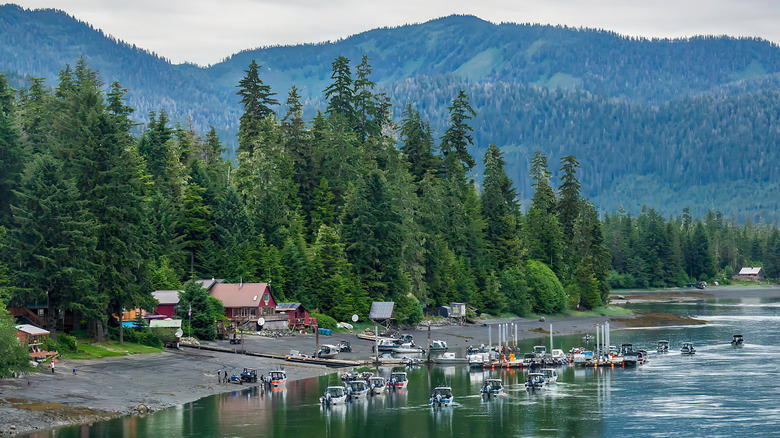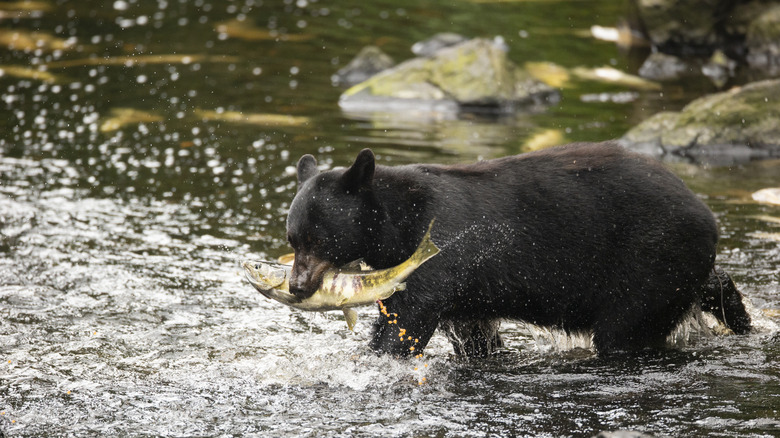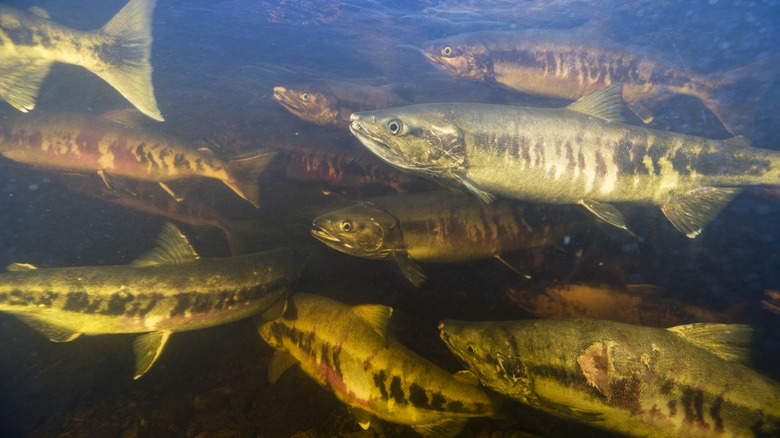A Paradise Of Trails And Mountain Views Makes Up This Remote Island In Tongass National Forest
We may receive a commission on purchases made from links.
Situated in the heart of America's largest national forest and the world's biggest unspoiled temperate rainforest, southeastern Alaska's remote Kupreanof Island is accessible only by plane or boat. An ideal nature destination for hikers, anglers, hunters, and backcountry campers, this spot is a gem in the crown of Tongass National Forest. For adventurous travelers seeking a secluded experience in truly wild country, it offers every opportunity to get lost among the tall trees and towering mountains of the cold North Pacific's Alexander Archipelago.
Reaching Kupreanof Island involves first getting to the little village of Kake, where visitors can either fly into the community's small airport or arrive via an Alaska Marine Highway System ferry (a lesser-known coastal route great for exploring Alaska's off-the-beaten-path towns and untouched wilderness). However, before heading out into the wild, check out the world's tallest totem pole in Kake.
Those taking the ferry can arrive with a private vehicle, but it won't be cheap. The most economical way to drive the old logging roads of Kupreanof Island is to rent a vehicle through the Kake Tribal Corporation. Visitors searching online for a vehicle to rent will see lots of options, but don't be fooled — this is the only place to rent a vehicle on the island. Once you're outfitted with a road-worthy truck or SUV, more than 120 miles of logging roads await. From the island's logging roads, drivers will have ample opportunities to pull off and take in the local sights, which include stunning mountain vistas, salmon-choked rivers, and incredible wildlife. Pro tip: Prepare to encounter logging trucks. These big vehicles take up lots of space, so pull over to the shoulder, if you can, to let them pass.
Kupreanof Island offers great hikes
Hikers have some solid options on Kupreanof Island, particularly on trails that start near Kake. One short hike with a spectacular payoff leads hikers along a steep trail to the foot of Cathedral Falls on Cathedral Creek. While only a quarter-mile long, the route features dramatic elevations while climbing up and coming down. In addition to watching your step, look out in the creek below for salmon and the bears fishing for them. Meanwhile, hikers who want to take in the splendor of the ocean and do some tidepooling can try the Portage Bay Trail south of Kake. During your trek, watch the horizon for breaching humpback whales.
With a vehicle, hikers can also explore the island's interior to find some adventures off the beaten path. However, take hee. Certain paths along salmon streams that may seem perfect for hiking could actually be trails created by generations of black bears and, in more remote areas, brown bears. Carrying a defense like Sabre Frontiersman Max Bear Spray while hiking (and fishing) these trails is a good idea, but it's never a replacement for common sense. If you spot bears or signs of them, consider choosing a different route. Another route for serious hikers is the Petersburg Mountain Trail. This trail is best reached via kayak or water taxi across the narrows between Petersburg, which is on Mitkoff Island, and the trailhead that starts near the Kupreanof Island public dock. The trail is rated as difficult, and is about 7 miles out and back. But the view from the top is certainly worth the lung-busting trek. On all hikes on Kupreanof, be prepared for wildlife encounters, and brush up on what to do if you see a bear or other wildlife while hiking.
Fishing is the real draw on Kupreanof Island
While it's certainly possible to hike and camp on Kupreanof, particularly from several trails that wind into Tongass National Forest near Kake, most hiking on the island is done with a purpose. Every summer, one of nature's great migrations begins on Kupreanof Island, and hikers who bring along a spinning or fly rod can catch their limit of healthy wild salmon. It all starts in May with king (chinook) salmon, the largest of the five Pacific salmon species. Sockeye (red) salmon follow in June, and pink and chum salmon arrive in July and August. The season ends with coho (silver) salmon in August and September.
With a vehicle, anglers can reach several different fishing holes. Virtually every river or stream you cross while navigating Kupreanof's logging roads into the forest has runs of salmon throughout the summer. But salmon aren't the only fish anglers can catch in the island's streams. Both gear and fly fishers can go after Dolly Varden, the native char of Southeast Alaska. These voracious predators follow the salmon into the rivers and steal eggs and eat salmon smolt (baby fish). Additionally, sea-run cutthroat trout (native to Kupreanoff) are very active when salmon are in the water.
Of course, those who want to catch and bring home salmon, halibut, ling cod, and rock fish in 25-pound freezer boxes will need to plan a visit to one of Kupreanof's fishing lodges. At spots like Keex' Kwan Lodge, anglers can get outfitted for fishing in deep ocean waters. Prefer floating in the water over fishing in it? Consider extending your vacation to include a visit to this sleepy Alaskan town with one of America's most breathtaking waterfall swimming holes.


